
Roots
To truly perceive the profound meaning hair held within African societies, one must look beyond the mirror’s surface, past the fleeting trends of today. It is a gaze that reaches into the very earth of ancestry, into the whispers carried on the wind through generations, where every strand became a living testament to spirit, community, and the cosmic order. Here, in the deepest strata of cultural memory, hair was never merely a covering; it was a language, a sacred scroll etched upon the scalp, speaking volumes of identity, lineage, and divine connection.
The very position of hair upon the head, the body’s highest point, positioned it as a direct link to the heavens, a conduit for spiritual energy and communication with the divine and ancestral spirits. This understanding shaped not only how hair was styled but also how it was treated, revered, and protected. It was a crown, both literal and metaphorical, worn by all, from the youngest child to the wisest elder, each style narrating a personal and collective story. This deep reverence for hair as a spiritual antenna permeated daily life and ceremonial practices across the continent.

Hair as a Spiritual Antenna
In many African cosmologies, the head was considered the seat of the soul, the mind, and spiritual power. Consequently, hair, sprouting from this vital center, gained immense spiritual significance. It was believed to be the primary point of contact between the individual and the spiritual realm, including deities, ancestors, and cosmic forces.
This belief meant that hair was not merely an aesthetic concern but a living, growing extension of one’s spiritual self. The vitality and appearance of one’s hair could reflect their spiritual well-being or connection to higher powers.
Consider the Maasai people of East Africa, where hair practices are deeply tied to spiritual and life stages. Young Maasai warriors, known as morans, would cultivate distinctive, often elaborate hairstyles, symbolizing their strength and transition into a warrior class. The shaving of hair, conversely, marked significant rites of passage, signaling a new beginning or a shift in spiritual status. This cyclical process of growth and cutting reaffirmed their connection to the spiritual world and their community’s customs.

What Cosmic Connections Did Hair Maintain?
Beyond individual spiritual contact, hair also maintained broader cosmic connections. It was often seen as a symbol of the earth’s fertility and the cycle of life. Long, healthy, and abundant hair could signify prosperity, vitality, and the capacity for bearing healthy children. This perspective intertwined human well-being with the natural world, suggesting that a person’s hair mirrored the health and abundance of their environment.
The belief that hair could be used for spiritual purposes, both protective and malevolent, meant that its care was often entrusted to close family members or respected community members. This practice stemmed from the understanding that a single strand, detached from the head, still held a fragment of the individual’s spiritual essence. Therefore, the disposal of hair clippings often involved specific rituals to ensure the owner’s continued well-being and protection from harm.
Hair, as the body’s highest point, served as a powerful spiritual conduit, linking individuals to ancestral wisdom and divine energies.
The Yoruba people of Nigeria provide another lens into this spiritual depth. In their cosmology, hair holds a sacred status, acting as a medium through which individuals connect with their ancestors and various deities, known as Orishas. Specific braided styles were sometimes associated with particular Orishas, reflecting devotion and a spiritual bond. This intricate relationship underscores how deeply personal grooming was tied to communal spiritual practices and beliefs.
Here is a summary of spiritual connections:
- Divine Communication ❉ Hair’s position on the head made it a primary channel for communicating with deities and the spirit world.
- Ancestral Link ❉ It served as a physical link to one’s ancestors, carrying their wisdom and blessings through generations.
- Life Force Symbolism ❉ Healthy, full hair symbolized vitality, fertility, and prosperity, reflecting the earth’s abundance.
- Protection and Power ❉ Hair was believed to hold protective qualities and could be used in spiritual practices for good or ill.
This profound connection to the spiritual realm meant that hair care was not a mere chore but a sacred ritual, often performed with reverence and intention. The tools used, the hands that styled, and the styles themselves were all imbued with meaning, transforming a daily act into a profound spiritual engagement.
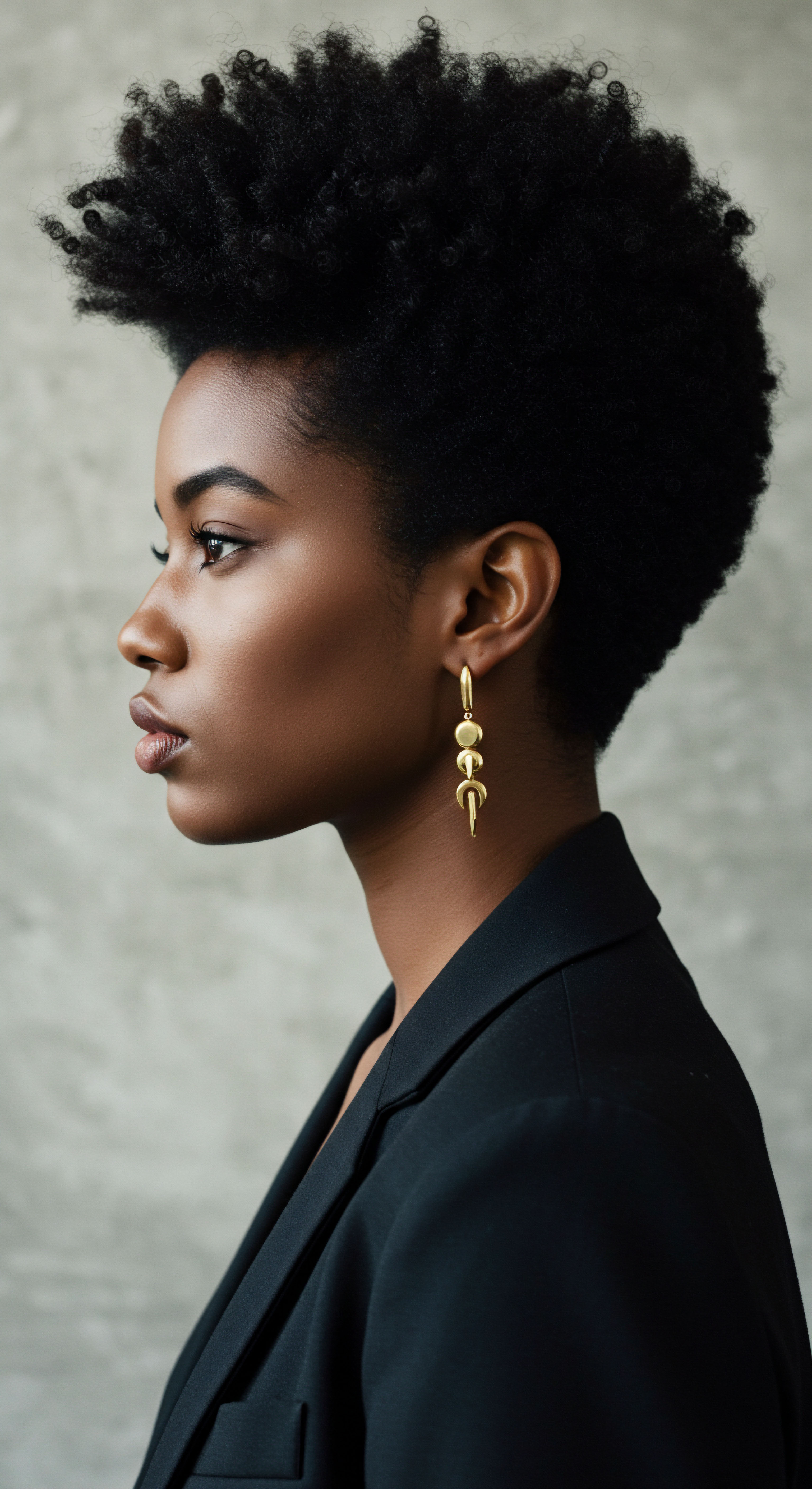
Ritual
Stepping into the realm of African hair rituals, we find ourselves observing practices that transcend mere aesthetics, becoming living expressions of identity, community, and the profound wisdom passed through time. It is here that the abstract concept of hair’s spiritual meaning takes tangible form, guiding hands in ancient gestures that shape not only strands but also lives, marking passages, celebrating unions, and communicating status. The daily or periodic practices surrounding hair were never casual; they were deliberate acts, imbued with intention and cultural significance, guiding individuals through their life’s journey with gentle wisdom.

Hair as a Marker of Life’s Stages
Across diverse African societies, hair served as a dynamic visual language, communicating a person’s journey through life’s various stages. A child’s first haircut, a young woman’s initiation into adulthood, a marriage, or the period of mourning all found expression in distinct hairstyles. These coiffures were not chosen for whim; they were prescribed forms, understood by all within the community, broadcasting personal status and communal identity.
For instance, among the Himba people of Namibia, a woman’s hairstyle visibly proclaims her age and marital status. Young girls might wear small braided sections, while adult women, particularly mothers, display larger, more elaborate styles often coated with a mixture of butterfat, ochre, and herb extracts, known as otjize. This application symbolizes their connection to the earth and their ancestors, while also serving as a cosmetic and protective agent. Each stage of a woman’s life is literally marked by a new hairstyle, embodying maturity and fertility.
Hair served as a visual language, conveying life stages, social standing, and communal belonging through intricate styles and adornments.
Similarly, the Wolof culture of Senegal utilized hair to convey marital status. Young girls might partially shave their heads as a clear signal that they were not yet of courting age, preventing unwanted advances. Conversely, elaborate styles could indicate a woman’s readiness for marriage or her newlywed status. These practices underscore hair’s role as a non-verbal communication system, guiding social interactions and maintaining communal order.
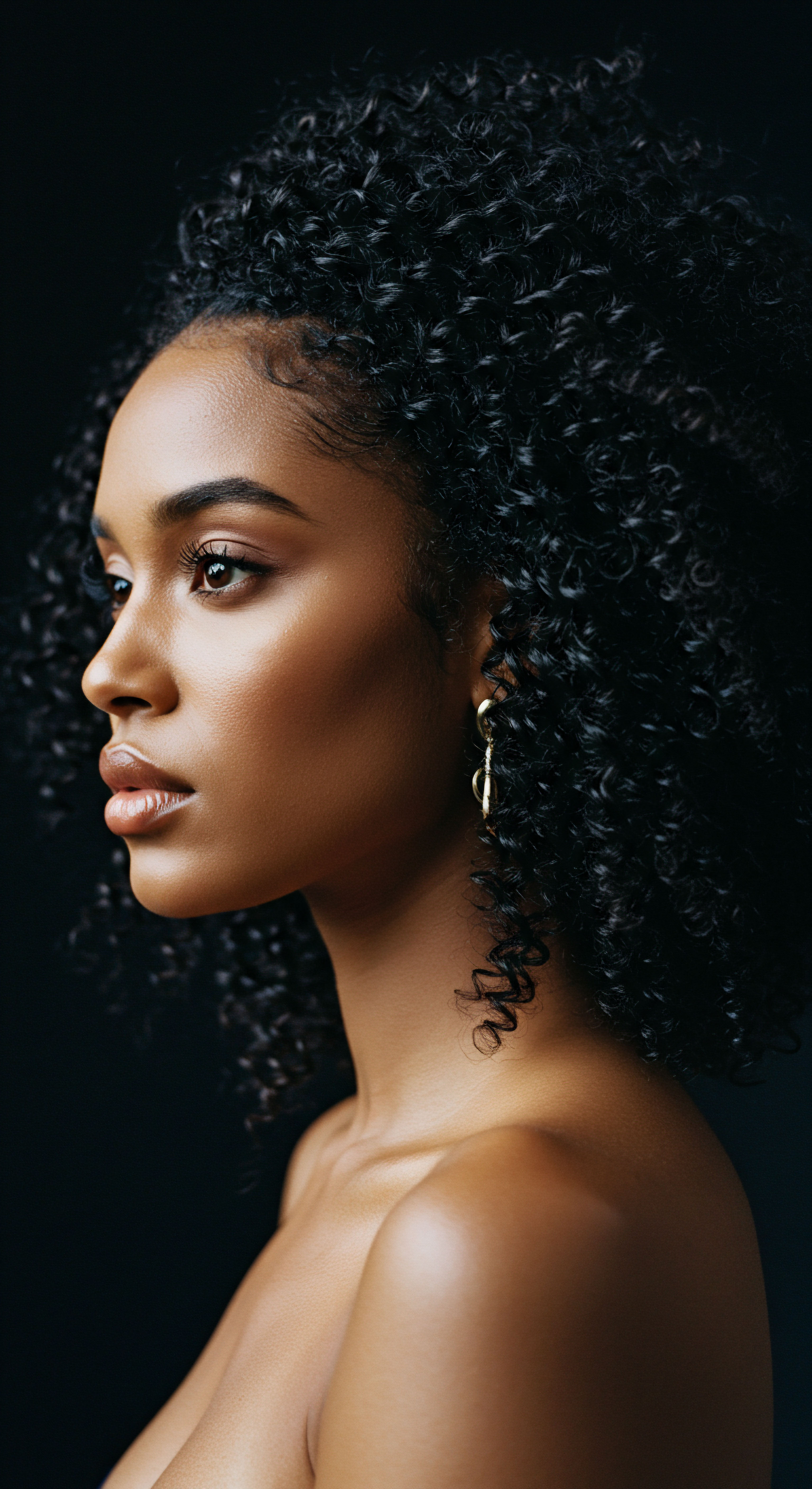
Communal Bonding Through Hair Care
The act of styling hair was, and often remains, a deeply communal and intimate experience. These sessions were not solitary endeavors but rather social gatherings, particularly among women. Mothers, sisters, aunts, and close friends would gather, sharing stories, laughter, and advice while meticulously braiding, twisting, or coiling each other’s hair. This shared activity strengthened social bonds and served as a powerful mechanism for transmitting cultural knowledge, traditions, and family histories from one generation to the next.
The significance of these communal hair care sessions cannot be overstated. They were spaces of collective memory, where elders imparted wisdom and younger generations learned the intricate techniques and symbolic meanings behind each style. This practice fostered a profound sense of belonging and solidarity, reinforcing the idea that an individual’s hair was a communal asset, a living archive of shared heritage.
Here is a table illustrating how different hairstyles signified social messages:
| Hairstyle Type or Practice Shaved Head |
| Common Meaning or Symbolism New beginnings, mourning, spiritual cleansing, humility, rite of passage. |
| Cultural Example Maasai warriors (initiation), Yoruba during mourning, some religious orders. |
| Hairstyle Type or Practice Intricate Braids/Coils |
| Common Meaning or Symbolism Social status, marital status, age, tribal affiliation, wealth, religious devotion. |
| Cultural Example Himba women (age/status), Yoruba women (fertility/marriage), Fulani (tribal identity). |
| Hairstyle Type or Practice Adornments (Beads, Shells) |
| Common Meaning or Symbolism Wealth, status, protection, spiritual connection, aesthetic enhancement. |
| Cultural Example Various West African groups, Himba. |
| Hairstyle Type or Practice Unkempt/Neglected Hair |
| Common Meaning or Symbolism Mourning, insanity, social withdrawal. |
| Cultural Example Mende of Sierra Leone, various groups during periods of grief. |
| Hairstyle Type or Practice These examples show how hair was a living billboard of identity and circumstance. |

Ritualistic Hair Preparation
The preparation of hair for styling often involved specific ritualistic elements. Natural ingredients, often believed to possess spiritual or healing properties, were commonly used. Oils extracted from local plants, mineral pigments, and herbal infusions were applied not only for their conditioning benefits but also to cleanse, protect, and bless the hair. These preparations were seen as a way to fortify the hair’s spiritual connection and to ward off negative energies.
The Mwila tribe of Angola, for example, uses a mixture of herbs, crushed red stone (oncula), oil, and powdered bark to create distinctive hair coverings. These ingredients are not merely decorative; they are believed to be gifts from the divine, imbued with protective qualities that reflect the wearer’s beliefs and standing within their group. This careful, intentional application of natural elements underscores the sacredness of the hair and the rituals surrounding its care.
The significance of the hairdresser, or the person who styled the hair, was also profound. This role was often reserved for individuals of respect and trust within the community, as they literally held a person’s spiritual conduit in their hands. The act of hair styling became a moment of shared confidence, a space where personal narratives and community wisdom flowed freely.

Relay
As we delve into the deeper layers of hair’s spiritual meanings in African societies, a more complex understanding emerges, one that recognizes hair not merely as a symbol but as a potent agent within a vast, interconnected cultural system. This section will explore the profound interplay of biological, psychological, social, and cultural factors that shaped these beliefs, drawing upon scholarship and historical data to paint a vivid picture of hair’s enduring significance. The inquiry here shifts to the less apparent complexities, inviting a profound insight where science, culture, and intricate details converge, maintaining Roothea’s characteristic warmth and accessibility.
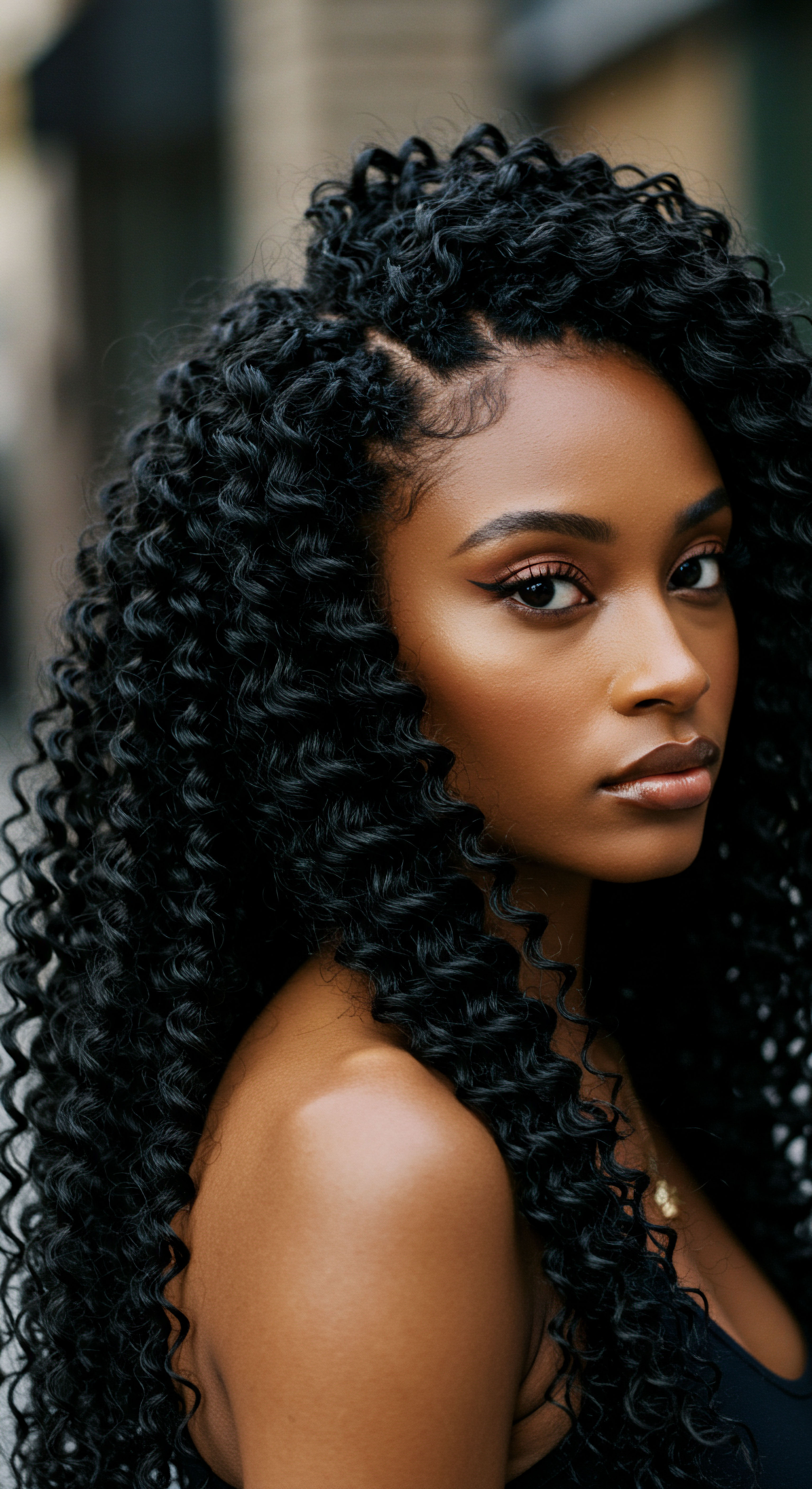
Hair as a Repository of Identity and Power
The head, and by extension the hair, was often regarded as the most vulnerable part of the body, yet also the most powerful. It was seen as the literal and metaphorical ‘crown’ of the individual, holding their essence, thoughts, and spiritual power. This belief rendered hair a critical component of personal and communal identity, so much so that its manipulation or forced alteration carried immense psychological and social weight.
In many pre-colonial African societies, hairstyles served as a complex system of non-verbal communication, conveying a wealth of information about an individual’s life. This included their age, marital status, social rank, tribal affiliation, wealth, and even their occupation. The artistry involved in creating these styles was a testament to the skill and cultural knowledge passed down through generations.
For example, specific patterns of cornrows or braids could identify a person’s lineage or geographic origin. The Wolof, Mende, Mandingo, and Yoruba societies, among others, used hairstyles as a means to carry messages, transforming hair into a living medium of societal information. The ability of African textured hair to be sculpted into various forms allowed for an unparalleled diversity of styles, each with its own specific social message.
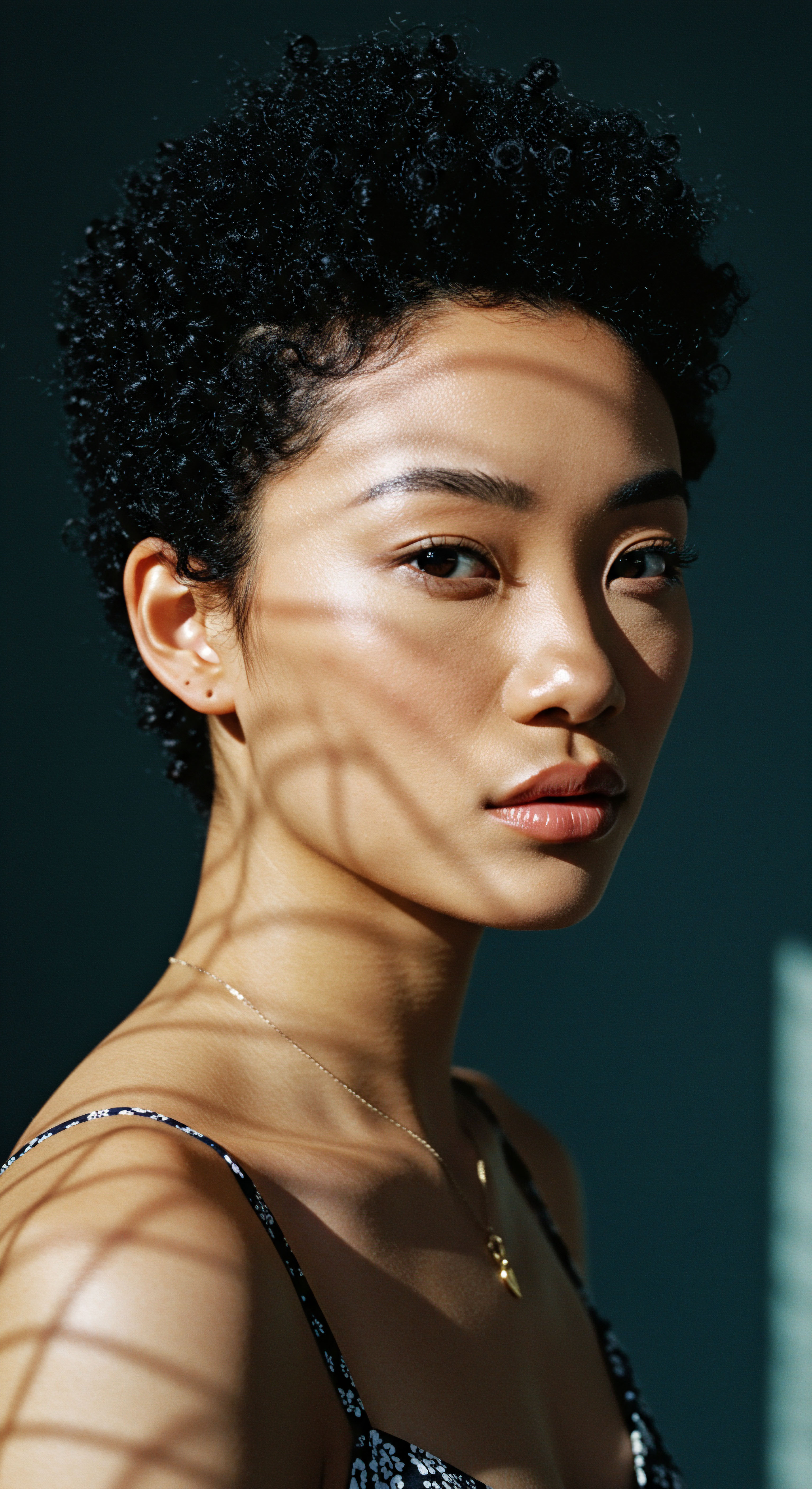
Colonialism’s Impact on Hair Spirituality
The arrival of European colonialism and the transatlantic slave trade marked a profound disruption of these deeply rooted spiritual and cultural connections to hair. Colonial powers often perceived traditional African hairstyles as “savage,” “uncivilized,” or “ungodly,” imposing European beauty standards and hair practices. This was not merely a superficial cultural exchange; it was a deliberate act of de-spiritualization and cultural erasure, a systematic assault on identity and spiritual continuity.
A stark example of this assault can be seen in the policies implemented by colonial authorities and missionary schools. Many missionary schools in East Africa, for instance, constructed a narrative that African hair was unsightly, ungodly, and untamable, often requiring African children to shave their heads or adopt straightened styles. This imposition was not just about cleanliness or uniformity; it was a strategy to diminish African identity and connection to their heritage. Students faced severe punishment for not complying, with some accounts even detailing physical abuse.
This historical pattern of forced hair alteration under colonial rule, as documented in scholarly works, highlights how deeply hair was intertwined with resistance and self-determination. During the Mau Mau Rebellion in Kenya (1952-1960), some African men and women actively rebelled against colonial rule by growing their hair, including dreadlocks. This act was seen as defiance and solidarity, so much so that colonial authorities considered those with dreadlocks a threat, sometimes leading to attacks or even killings.
The dehumanization of enslaved Africans also prominently featured the forced shaving of hair upon arrival in the “New World.” This act was a deliberate attempt to strip individuals of their identity, sever their cultural ties, and reduce them to mere commodities. Despite these efforts, hair continued to serve as a silent yet potent expression of identity and resistance for many.
The forced shaving and shaming of African hair during colonialism were direct assaults on spiritual identity and cultural continuity, revealing hair’s profound role in resistance.
The lingering effects of this historical oppression are still felt today, with natural hair sometimes facing discrimination in professional or academic settings, reflecting ingrained Eurocentric beauty standards. A survey of 159 Black African female students in a predominantly Black university in rural South Africa revealed that a significant majority (96.2%) reported having chemically straightened hair, and 87.2% had worn hair extensions and weaves. This data points to the continued influence of beauty standards that historically devalued natural African hair, creating a cycle of identity erasure.

Hair and the Cosmos ❉ A Deeper Look at Energy and Protection
Beyond its social communication, the spiritual dimension of hair often involved beliefs about its capacity to channel or store energy. The hair was seen as a sensitive antenna, capable of receiving spiritual messages and influences from the environment. This belief extended to practices aimed at protecting the hair, and thus the individual, from negative energies or malevolent spirits. Head coverings, for instance, were not solely for modesty or aesthetic purposes but also served as a form of spiritual protection, particularly for women during menstruation or other periods of heightened spiritual vulnerability.
The significance of hair in traditional healing practices also bears mention. In some contexts, hair clippings were incorporated into traditional medicines or rituals, believed to enhance the potency of remedies or to connect the patient to ancestral healing powers. This practice underscores the understanding of hair as a living part of the body, retaining a vital energetic connection to the individual even after separation.
The careful handling and disposal of hair, as previously noted, was thus a practical application of these spiritual beliefs. Discarded hair was often buried or disposed of in specific ways to prevent it from falling into the wrong hands, where it could potentially be used for harmful magic or rituals. This protective measure highlights the profound respect and even reverence accorded to every strand.
Consider the varying spiritual beliefs surrounding hair and its manipulation:
- Conduit for Divine Energy ❉ Hair acts as a primary channel for receiving spiritual messages and influences.
- Symbol of Life Force ❉ Abundant Hair represents vitality, fertility, and prosperity, mirroring the health of the community and land.
- Protective Amulet ❉ Hair is believed to hold protective qualities, safeguarding individuals from negative spiritual forces.
- Medium for Rituals ❉ Hair Clippings are sometimes used in traditional healing or spiritual practices to enhance potency or connection.
The nuanced understanding of hair in African societies transcends simple adornment, positioning it as a dynamic, living aspect of human existence, intimately connected to the spiritual, social, and cosmic realms. This holistic view invites us to reconsider our own relationship with hair, seeing it not just as a physical attribute but as a profound repository of heritage and spiritual meaning.
| Aspect of Hair Hair's Position |
| Spiritual Meaning Closest to the divine, conduit for spiritual communication. |
| Societal Function Defines sacredness of head, influences grooming rituals. |
| Aspect of Hair Texture and Volume |
| Spiritual Meaning Symbol of life force, fertility, prosperity. |
| Societal Function Indicator of health, well-being, and potential for offspring. |
| Aspect of Hair Styling Practices |
| Spiritual Meaning Expression of spiritual devotion, connection to deities/ancestors. |
| Societal Function Communicates social status, age, marital status, tribal identity. |
| Aspect of Hair Hairdressers' Role |
| Spiritual Meaning Guardians of spiritual connection, trusted community members. |
| Societal Function Facilitate communal bonding, transmit cultural knowledge. |
| Aspect of Hair Hair Clippings |
| Spiritual Meaning Retain spiritual essence, potential for protection or harm. |
| Societal Function Require ritualistic disposal to safeguard individual. |
| Aspect of Hair The meanings attached to hair were deeply intertwined with daily life and spiritual beliefs. |

Reflection
Our journey through the spiritual meanings of hair in African societies reveals a narrative far richer and more profound than many modern perspectives allow. We have seen hair not as a mere physical attribute, but as a living canvas, a sacred conduit, and a powerful repository of identity, history, and spiritual connection. The echoes of ancestral reverence for hair resonate even today, reminding us that every curl, coil, and strand carries a legacy of resilience and deep cultural wisdom.
This understanding invites us to look upon textured hair with renewed appreciation, recognizing its inherent beauty and its timeless link to a heritage that speaks volumes without uttering a single word. It encourages a mindful approach to hair care, one that honors its historical significance and celebrates its enduring power as a symbol of self and spirit.
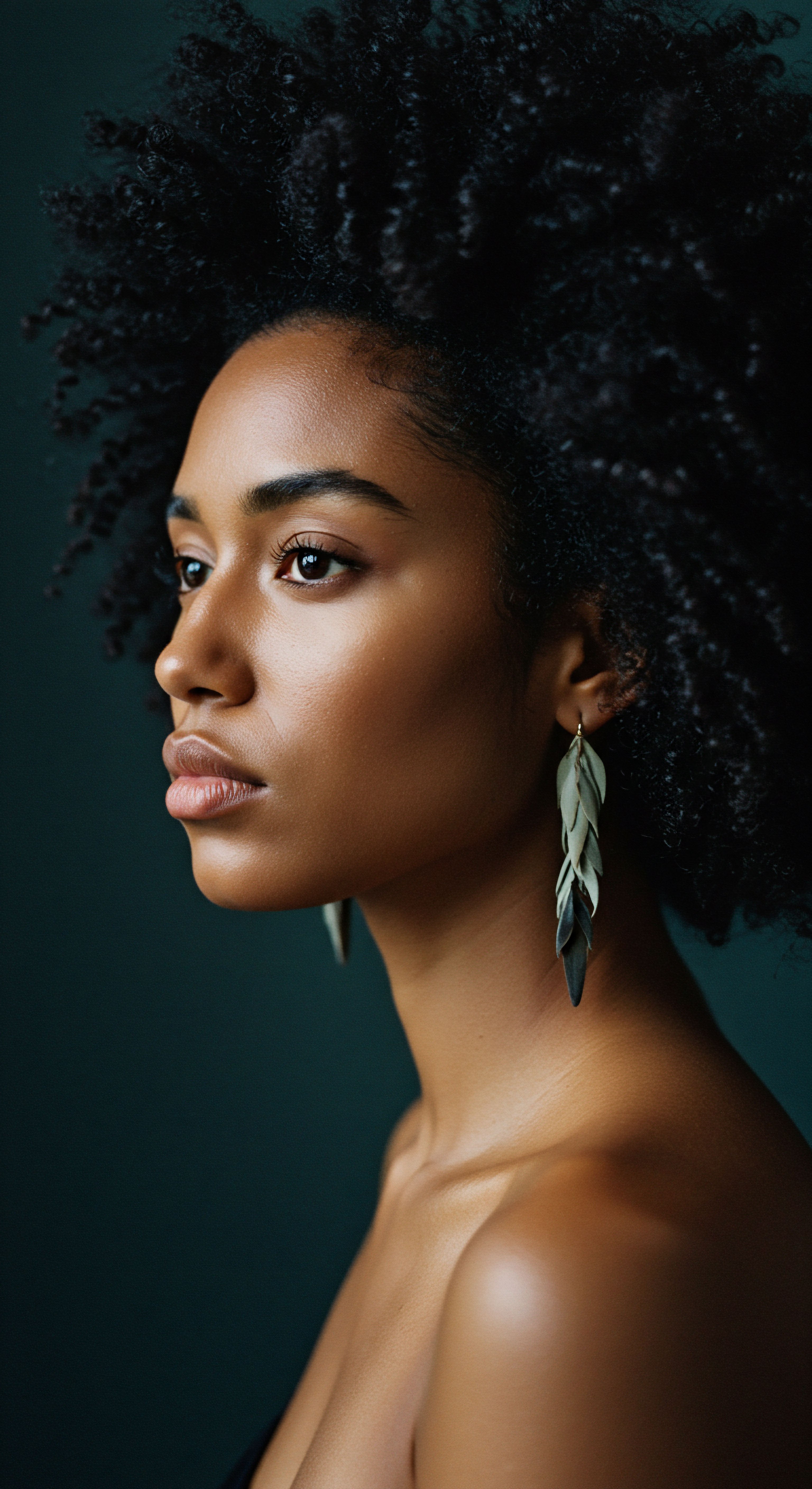
References
- Adetutu Omotoso, Sharon. “Gender and Hair Politics ❉ An African Philosophical Analysis.” Journal of Pan African Studies, 2018.
- Akanmori, E. “The Significance of Hair and Hair Styling as a Socio-Cultural Practice and Identity.” 2015.
- Banks, Ingrid. Hair Matters ❉ Beauty, Power, and Black Women’s Consciousness. New York University Press, 2000.
- Byrd, Ayana, and Lori Tharps. Hair Story ❉ Untangling the Roots of Black Hair in America. St. Martin’s Press, 2001.
- Essel, J. “The Semiotic Visual Analysis of Avant-Garde Fashion Designs in Ghana.” 2023.
- Johnson, Tiffany, and Tyra Bankhead. “Hair It Is ❉ Examining the Experiences of Black Women with Natural Hair.” Open Journal of Social Sciences, vol. 2, no. 1, 2014, pp. 86-100.
- Matjila, Chéri R. “The Meaning of Hair for Southern African Black Women.” University of the Free State, 2020.
- Mercer, Kobena. “Black Hair/Style Politics.” Welcome to the Jungle ❉ New Positions in Black Cultural Studies, Routledge, 1994.
- Mbodj, Mohamed. Associate Professor of History, Columbia University. (Cited in Okan Africa Blog).
- Oyedemi, Toks. ” ‘Beautiful’ Hair and the Cultural Violence of Identity Erasure.” ResearchGate, 2016.
- Sieber, Roy, and Frank Herreman. Hair in African Art and Culture. Museum for African Art, 2000.
- Tshiki, Nonkoliso Andiswa. “African Hairstyles – The “Dreaded” Colonial Legacy.” The Gale Review, 2021.
- White, Luise. Speaking with Vampires ❉ Rumor and History in Colonial Africa. University of California Press, 2000.